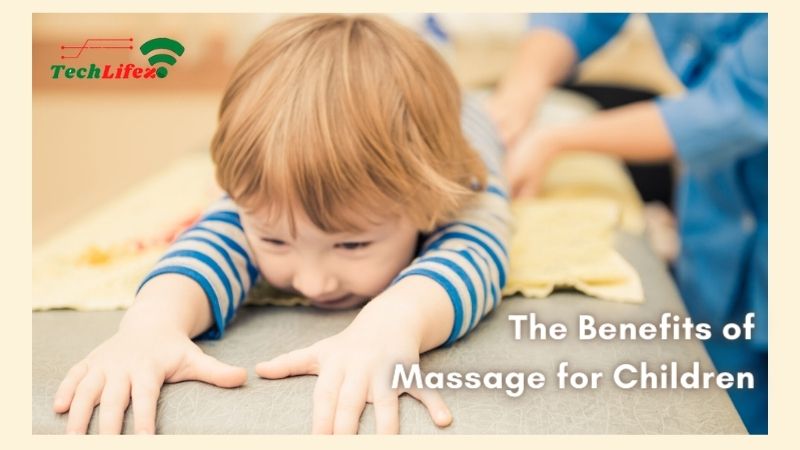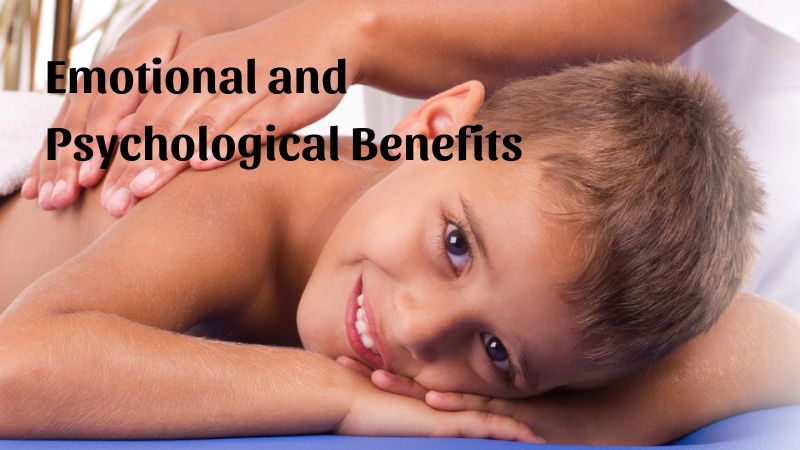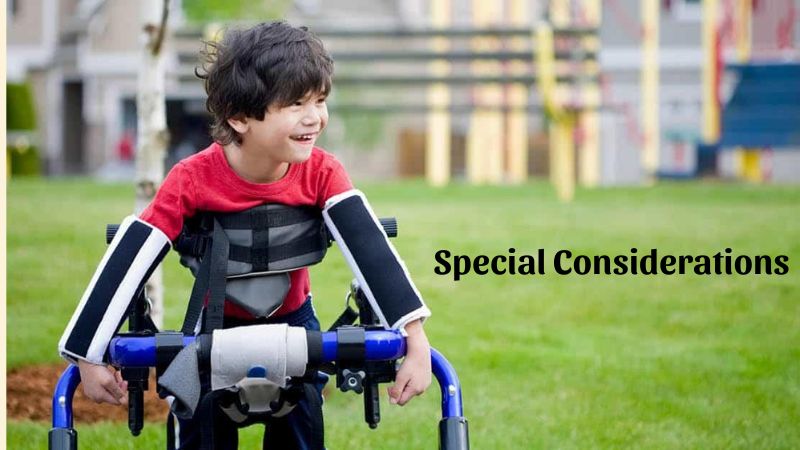Massage therapy is a time-honored practice known for its myriad health benefits, and these benefits extend to children as well. The benefits of massage for children are wide-ranging, encompassing physical, emotional, and developmental advantages that contribute to their overall well-being. In this article, Techlifez will delve into the various ways in which massage can positively impact children, and why incorporating it into their routine can be highly beneficial.
Contents
Physical Benefits of Massage for Children
One of the primary benefits of massage for children is improved circulation. Massage enhances blood flow, which helps in delivering essential oxygen and nutrients to cells while facilitating the removal of waste products. This can be particularly important for growing children, as their bodies require efficient nutrient distribution to support development.
Another significant benefit is the enhancement of immune function. Regular massage stimulates the lymphatic system, which plays a crucial role in the body’s defense against illness. By boosting the immune response, massage can help children stay healthier and reduce the frequency of common illnesses.
Massage also provides relief from physical discomfort. Children, especially those who are active in sports or other physical activities, often experience muscle tension and soreness. Massage can alleviate these symptoms, promoting faster recovery and preventing injuries. Additionally, it can be beneficial for children suffering from chronic pain conditions, such as juvenile arthritis, by providing much-needed relief.
Improved sleep is another critical benefit of massage for children. Massage promotes relaxation and reduces stress, which can significantly enhance the quality of sleep. Good sleep is essential for children’s growth, cognitive development, and overall health. By helping children relax before bedtime, massage can contribute to more restful and restorative sleep.
Furthermore, massage can enhance motor skills. Gentle massage techniques can support the development of fine and gross motor skills by improving muscle tone, flexibility, and coordination. This is particularly beneficial for younger children who are still developing these essential skills.
Emotional and Psychological Benefits of Massage for Children
The emotional and psychological benefits of massage for children are equally profound. One of the most notable benefits is the reduction of anxiety and stress. Massage can lower cortisol levels, the hormone associated with stress, thereby creating a sense of calm and relaxation. This is especially important for children who may be dealing with academic pressures, social challenges, or other stressors.
Massage can also improve mood and behavior. By stimulating the release of endorphins, the body’s natural feel-good chemicals, massage can elevate a child’s mood and contribute to better overall behavior. Children who receive regular massage may exhibit increased emotional regulation and a more positive outlook on life.
Increased body awareness is another benefit of massage for children. Regular massage can help children become more attuned to their bodies, fostering a better understanding of how they feel physically and emotionally. This heightened body awareness can boost self-esteem and confidence, helping children navigate their environments more effectively.
Massage can also enhance bonding and trust between a child and the caregiver performing the massage. This physical closeness and attention can strengthen the emotional bond, fostering a sense of security and attachment. For young children, this can be particularly comforting and reassuring.
Cognitive and Developmental Benefits of Massage for Children
The cognitive and developmental benefits of massage for children are also noteworthy. One such benefit is improved focus and concentration. Massage helps calm the mind and reduce distractions, which can enhance a child’s ability to concentrate. This can be especially beneficial in academic settings, where improved focus can lead to better learning outcomes.
Enhanced sensory awareness is another developmental benefit. For children with sensory processing issues, massage can help integrate sensory information more effectively, reducing hypersensitivity and improving comfort with touch. This can make daily activities less overwhelming and more enjoyable for these children.
Special Considerations for Children with Special Needs
The benefits of massage for children with special needs are particularly significant. For children with autism spectrum disorders, massage has been shown to reduce symptoms of anxiety and hyperactivity, improving their ability to engage and interact socially. This can lead to better social relationships and increased participation in various activities.
For children with Attention Deficit Hyperactivity Disorder (ADHD), massage can help reduce impulsivity and hyperactivity while enhancing calm and focus. This can lead to better behavioral control and improved academic performance.
Children with chronic illnesses or pain conditions, such as juvenile arthritis, can also benefit greatly from massage. Regular massage can provide pain relief, improve mobility, and enhance the overall quality of life. It offers a non-invasive way to manage symptoms and support the child’s comfort and well-being.
Practical Tips for Implementing Massage for Children
To maximize the benefits of massage for children, it is important to consider a few practical tips:
- Choose the Right Environment: Create a calm, quiet, and comfortable setting for the massage. This helps the child relax and enjoy the experience.
- Use Gentle Techniques: For children, it’s crucial to use gentle, soothing strokes and avoid deep tissue techniques unless specifically advised by a professional. This ensures the massage is enjoyable and effective without causing discomfort.
- Be Consistent: Regular massage sessions can maximize the benefits. Establishing a routine, whether daily or several times a week, can provide ongoing support for the child’s physical and emotional health.
- Seek Professional Guidance: If you are unsure about techniques or dealing with specific health conditions, consulting a professional massage therapist trained in pediatric massage can be helpful. They can provide tailored advice and ensure the massage is safe and effective.
Conclusion
The benefits of massage for children are extensive, encompassing physical, emotional, cognitive, and developmental advantages. By improving circulation, enhancing immune function, relieving physical discomfort, and promoting better sleep, massage supports children’s physical health. Emotionally, it reduces anxiety, improves mood and behavior, increases body awareness, and strengthens bonds with caregivers. Cognitively, it enhances focus, concentration, and sensory awareness, contributing to better learning and development.
For children with special needs, such as those with autism or ADHD, or chronic conditions like juvenile arthritis, the benefits of massage for children are particularly impactful, offering significant improvements in symptoms and overall quality of life. Incorporating massage into a child’s routine is a simple yet effective way to support their well-being and development, making it a valuable practice for parents and caregivers to consider.




